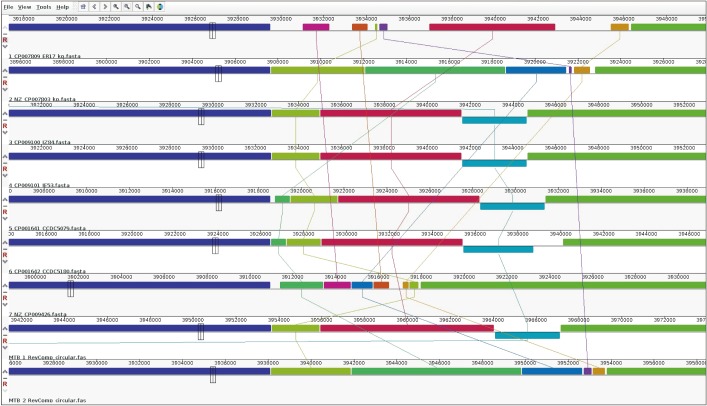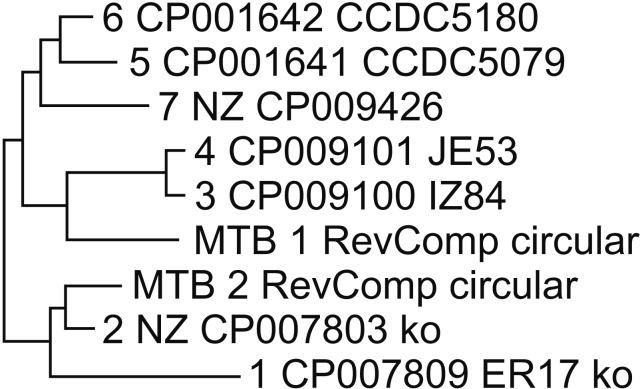2. Lee YK, Kwon YH, Lee SC, Sohn HJ, Koh YW. Overview of tuberculosis control and prevention polices in Korea. Public Health Wkly Rep. 2015; 8:651–656.
3. Korea Centers for Disease Control and Prevention. Annual report on the notified tuberculosis in Korea. Cheongwon: Korea Centers for Disease Control and Prevention;2015.
4. Min GH, Kim Y, Lee JS, Oh JY, Hur GY, Lee YS, et al. Social and clinical characteristics of Immigrants with tuberculosis in South Korea. Yonsei Med J. 2017; 58:592–597. PMID:
28332365.

5. Kim SJ, Bai GH, Lee H, Kim HJ, Lew WJ, Park YK, et al. Transmission of
Mycobacterium tuberculosis among high school students in Korea. Int J Tuberc Lung Dis. 2001; 5:824–830. PMID:
11573893.
6. Jeon CY, Kang H, Kim M, Murray MB, Kim H, Cho EH, et al. Clustering of
Mycobacterium tuberculosis strains from foreign-born patients in Korea. J Med Microbiol. 2011; 60(Pt 12):1835–1840. PMID:
21799194.
7. Jiang J, Gu J, Zhang L, Zhang C, Deng X, Dou T, et al. Comparing
Mycobacterium tuberculosis genomes using genome topology networks. BMC Genomics. 2015; 16:85. PMID:
25766780.

8. Darling AC, Mau B, Blattner FR, Perna NT. Mauve: multiple alignment of conserved genomic sequence with rearrangements. Genome Res. 2004; 14:1394–1403. PMID:
15231754.

9. Bose M, Chander A, Das RH. A rapid and gentle method for the isolation of genomic DNA from mycobacteria. Nucleic Acids Res. 1993; 21:2529–2530. PMID:
8506155.

10. Eid J, Fehr A, Gray J, Luong K, Lyle J, Otto G, et al. Real-time DNA sequencing from single polymerase molecules. Science. 2009; 323:133–138. PMID:
19023044.

11. Chin CS, Alexander DH, Marks P, Klammer AA, Drake J, Heiner C, et al. Nonhybrid, finished microbial genome assemblies from long-read SMRT sequencing data. Nat Methods. 2013; 10:563–569. PMID:
23644548.

12. Koren S, Schatz MC, Walenz BP, Martin J, Howard JT, Ganapathy G, et al. Hybrid error correction and de novo assembly of single-molecule sequencing reads. Nat Biotechnol. 2012; 30:693–700. PMID:
22750884.

13. Park YK, Kang H, Yoo H, Lee SH, Roh H, Kim HJ, et al. Whole-genome sequence of
Mycobacterium tuberculosis Korean strain KIT87190. Genome Announc. 2014; 2:e01103–e01114. PMID:
25359915.

14. Han SJ, Song T, Cho YJ, Kim JS, Choi SY, Bang HE, et al. Complete genome sequence of
Mycobacterium tuberculosis K from a Korean high school outbreak, belonging to the Beijing family. Stand Genomic Sci. 2015; 10:78. PMID:
26473025.

15. Chen L, Zhang DT, Zhang J, Su YA, Zhang H. Whole-genome sequences of two clinical isolates of extensively drug-resistant
Mycobacterium tuberculosis from Zunyi, China. Genome Announc. 2014; 2:e00910–e00914. PMID:
25237021.

16. Zhang Y, Chen C, Liu J, Deng H, Pan A, Zhang L, et al. Complete genome sequences of
Mycobacterium tuberculosis strains CCDC5079 and CCDC5080, which belong to the Beijing family. J Bacteriol. 2011; 193:5591–5592. PMID:
21914894.
17. Wan X, Qian L, Hou S, Drees KP, Foster JT, Douglas JT. Complete genome sequences of Beijing and Manila family strains of
Mycobacterium tuberculosis. Genome Announc. 2014; 2:e01135–e01114.

18. Niemann S, Koser CU, Gagneux S, Plinke C, Homolka S, Bignell H, et al. Genomic diversity among drug sensitive and multidrug resistant isolates of Mycobacterium tuberculosis with identical DNA fingerprints. PLoS One. 2009; 4:e7407. PMID:
19823582.







 PDF
PDF ePub
ePub Citation
Citation Print
Print





 XML Download
XML Download